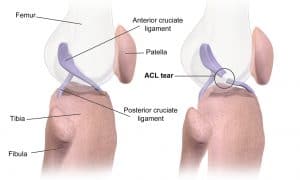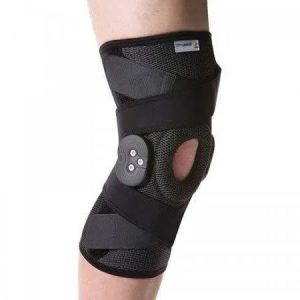Have you been feeling pain in your knee when walking, bending, or putting weight on it? Perhaps it feels sore after activity, or you’ve noticed some swelling? These are common causes of knee pain, and you might have it. Can a brace help? Here’s what you need to know.
What Is Knee Pain?

(Image Credit: Regen Ortho Center)
Knee pain is a broad term for aches in or around the knee joint. It can happen from daily strain, injuries, or long-term wear—experienced by people of all ages.
The knee is the largest and most complex joint in the body. It functions like a hinge, letting you sit, squat, walk, and jump. Because of this, it takes on a lot of stress as it carries your body weight during each movement.
Knee pain can be temporary (short-term) but can also become a chronic (long-term) issue. In that case, a healthcare provider’s diagnosis and treatment are needed.
Causes of Knee Pain
Knee pain can be caused by overuse, injuries, or arthritis that often comes with ageing.
Overuse
Overuse happens when you repeat specific movements during exercise, sports, or physical work. For instance, running, sudden stops in football, or frequent squatting when gardening. This can put prolonged stress on your knee joint and lead to irritation and inflammation, as well as conditions such as runner’s knee (patellofemoral pain syndrome) and jumper’s knee (patellar tendinitis).
Injuries

(Image Credit: Wikimedia Commons)
Knee ligament tears, common among athletes, are one example. A bow to the outer side of the knee usually causes this.
Torn knee ligaments can be classified into four types:
- ACL tear – A case of overstretching of the anterior cruciate ligament or ACL. This connects the thigh bone to the shin bone at the front of the knee.
- LCL tear – A rupture of the lateral collateral ligament or LCL. This runs along the outer side of the knee.
- MCL tear – Injury on the inner side of the knee, also referred to as the medial collateral ligament or MCL.
- PCL tear – A compromise on the posterior cruciate ligament or PCL, behind the ACL. This helps in controlling backwards movement in the knee.
Arthritis
Arthritis occurs when the cushioning cartilage in your knee joint wears down. This can make your knees feel stiff and sore, and harder to move. It also often gets worse as you get older. The most common type is osteoarthritis, and it can affect one knee or both.
Common Symptoms of Knee Pain
Noticed any of these signs? They might be hinting at a knee problem—and in some cases, it could be something more serious:
- A dull or sharp ache in or around the knee
- Swelling or puffiness
- Stiffness or trouble bending the knee
- Clicking, popping, or grinding sounds when you move
- The feeling that your knee might give way
- Pain when putting weight on your leg
- Limited range of movement in the knee
- Discomfort after activity or being on your feet for a while
Do I Need a Knee Brace?

Yes, a knee brace can be helpful if you’re dealing with knee pain or instability. It can give support if it feels weak, swollen, or if you’re recovering from a strain or ligament injury.
But before wearing knee supports, consult your healthcare provider or physical therapist. This applies even for simple pain relief, especially if symptoms persist. They can help you determine what’s causing the pain and whether a brace fits your needs.
For instance, they might suggest a knee brace for arthritis if it turns out to be osteoarthritis. This, along with other treatments like physiotherapy, depending on your condition.
Disclaimer: This blog is for general information and shouldn’t replace medical advice.


